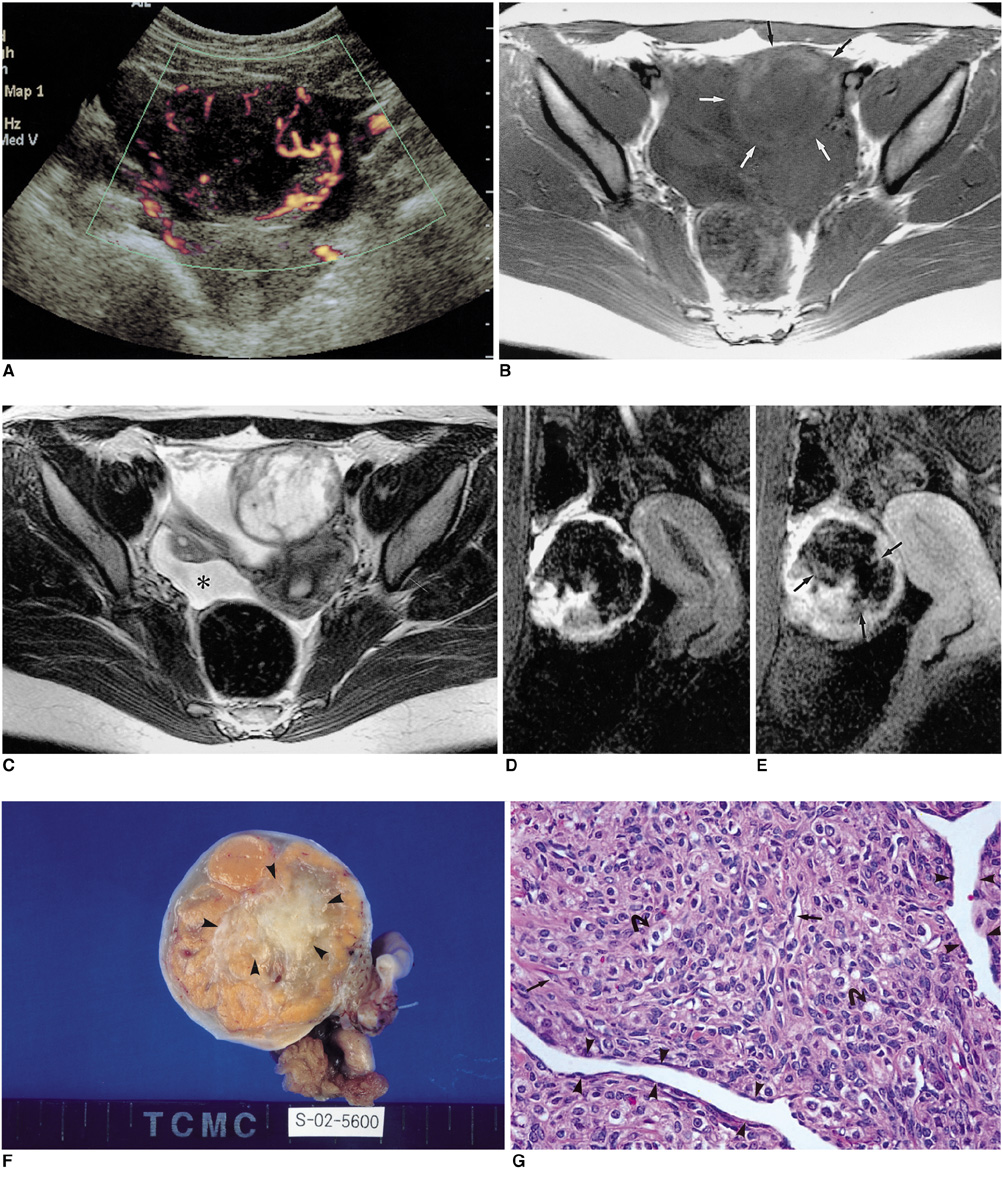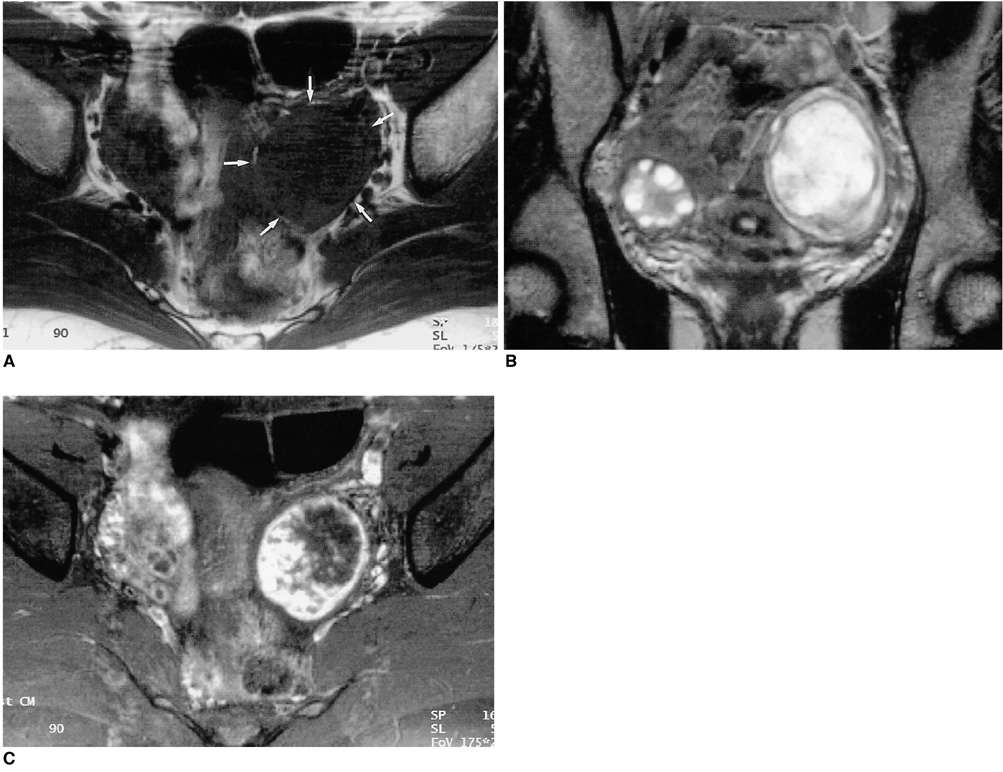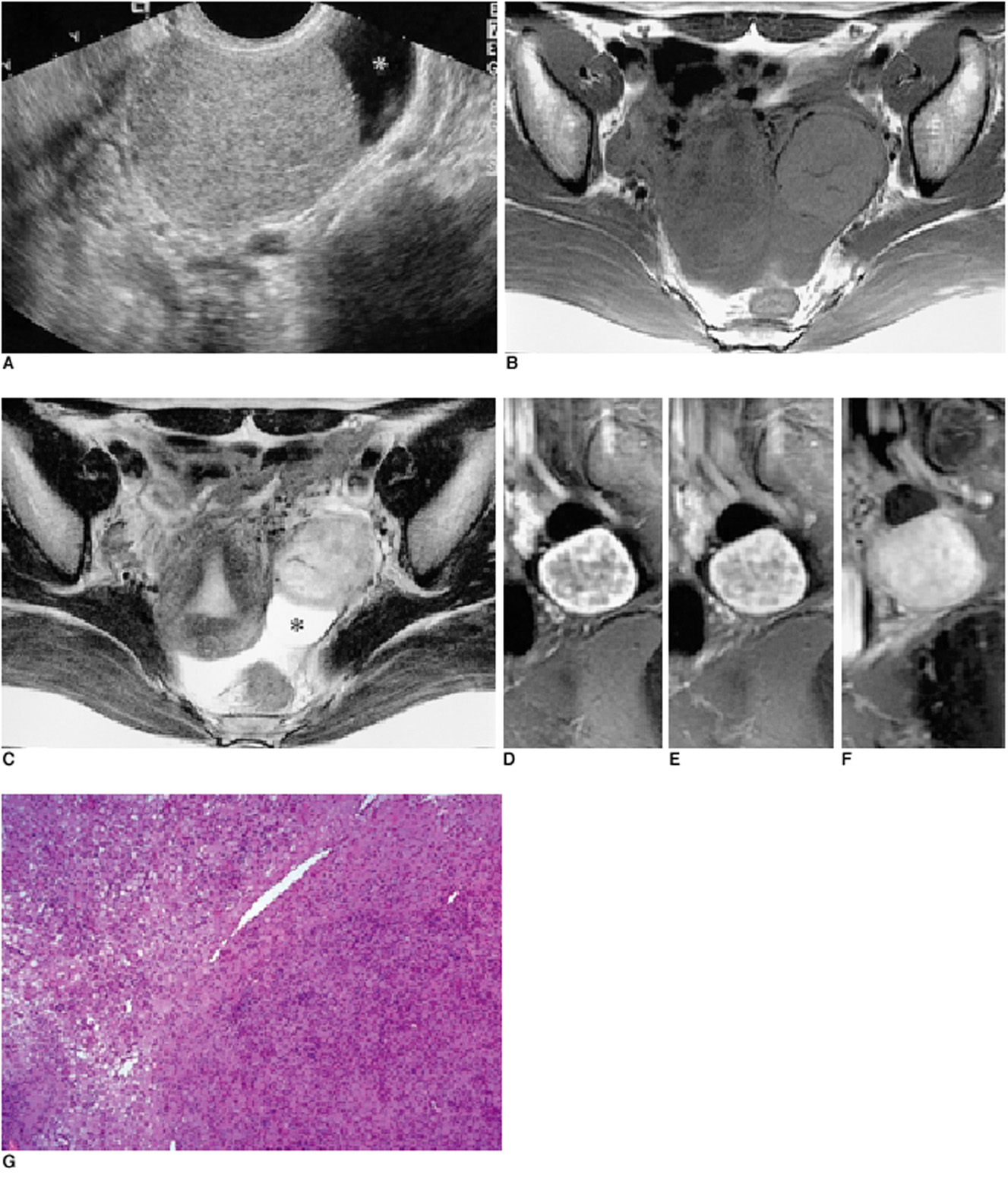Korean J Radiol.
2003 Sep;4(3):194-199. 10.3348/kjr.2003.4.3.194.
Sclerosing Stromal Tumor of the Ovary: MR-Pathologic Correlation in Three Cases
- Affiliations
-
- 1Department of Radiology, School of Medicine, Catholic University of Daegu. kjjung@cataegu.ac.kr
- 2Department of Radiology, School of Medicine, Keimyung University.
- 3Department of Radiology, School of Medicine, Donga University.
- KMID: 754025
- DOI: http://doi.org/10.3348/kjr.2003.4.3.194
Abstract
- Sclerosing stromal tumor (SST) of the ovary is a very rare sex cord stromal tumor occurring in a younger age group than other types of stromal tumors and most commonly accompanied by menstrual irregularity. Several unique histologic features including pseudolobulation, sclerosis and prominent vascularity are clearly reflected at ultrasonography and MRI. We report the ultrasonographic and MR features of three cases of histologically confirmed SSTs, and relate them to the pathological findings.
Keyword
Figure
Reference
-
1. Ihara N, Togashi K, Todo G, et al. Sclerosing stromal tumor of the ovary: MRI. J Comput Assist Tomogr. 1999. 23:555–557.2. Matsubayashi R, Matsuo Y, Doi J, Kudo S, Matsuguchi K, Sugimori H. Sclerosing stromal tumor of the ovary: radiologic findings. Eur Radiol. 1999. 9:1335–1338.3. Kawauchi S, Tsuji T, Kaku T, Kamura T, Nakano H, Tsuneyoshi M. Sclerosing stromal tumor of the ovary: a clinicopathologic, immunohistochemical, ultrastructural, and cytogenetic analysis with special reference to its vasculature. Am J Surg Pathol. 1998. 22:83–92.4. Lee MS, Cho HC, Lee Y-H, Hong SR. Ovarian sclerosing stromal tumors: gray scale and color Doppler sonographic findings. J Ultrasound Med. 2001. 20:413–417.5. Joja I, Okuno K, Tsunoda M, et al. Sclerosing stromal tumor of the ovary: US, MR, and dynamic MR findings. J Comput Assist Tomogr. 2001. 25:201–206.6. Outwater EK, Wagner BJ, Mannion C, McLarney JK, Kim B. Sex cord-stromal and steroid cell tumors of the ovary. RadioGraphics. 1998. 18:1523–1546.7. Chalvardjian A, Scully RE. Sclerosing stromal tumors of the ovary. Cancer. 1973. 31:664–670.8. Jung SE, Lee JM, Rha SE, Byun JY, Jung JI, Hahn ST. CT and MR imaging of ovarian tumors with emphasis on differential diagnosis. RadioGraphics. 2002. 22:1305–1325.9. Damjanov I, Drobnjak P, Grizelj V, Longhino N. Sclerosing stromal tumor of the ovary: a hormonal and ultrastructural analysis. Obstet Gynecol. 1975. 45:675–679.10. Yuen BH, Robertson I, Clement PB, Mincey EK. Sclerosing stromal tumor of the ovary. Obstet Gynecol. 1982. 60:252–256.




